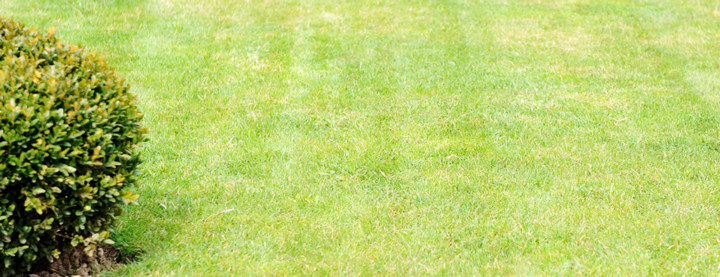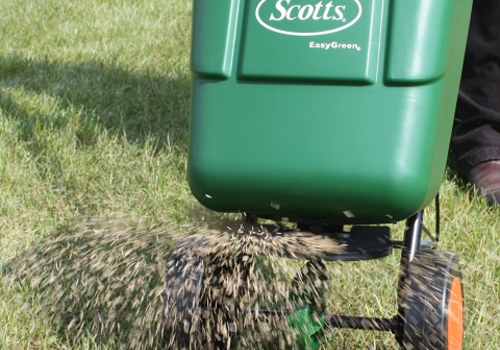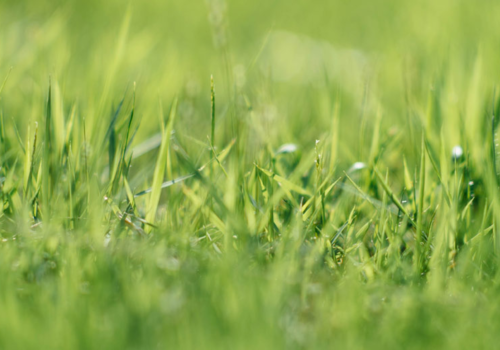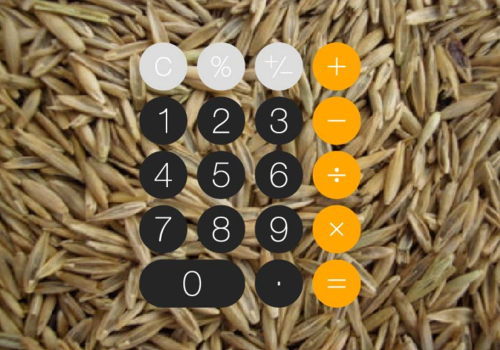
There are many reasons for overseeding a lawn area with grass seed. This could be due to general maintenance after raking or scarifying, replacing patches/minor repairs, or you may want to add specialist grass seed for shady areas to improve appearances around trees and buildings. Whatever the reason, you should evaluate the current usage of your lawn and decide on a suitable product. If you are unsure, please give us a call on 01205 280069, where our expert advisers will be delighted to advise.
Overseeding an existing lawn
We stock a range of products suitable for overseeding and you might want to take this opportunity to add new grasses to your lawn if its usage has changed over time. Our BS Renovator - Lawn Repair Grass Seed is the simplest, most effective and economical way to overseed an existing lawn. This mix is a blend of three amenity dwarf perennial ryegrass varieties - the same blend used each and every year in professional sports to repair and improve grass playing surfaces. This mix of professional quality grass seed can germinate in as little as 7-10 days in ideal conditions.
Other mixes that can used include our BS Childs Play Lawn Seed for lawns with mixed usage and BS Premier Lawn Grass Seed, which will not only repair and thicken your lawn, but also add in exceptional quality grasses, improving the quality and appearance of the lawn with each overseed.
The rate for overseeding is sometimes lower than the rate for starting a new lawn, although sometimes adding more, particularly if ryegrass is included, will speed recovery. However, if you are trying to improve your lawn by changing the type of seed then adding more will cause more of a change.
Do not automatically assume more is better! This will cause extremely dense growth that creates unecessary competiton between the grass plants. Use a grass seed spreader for a more even spread, and follow the sowing rates on individual products.
How to overseed
A dry lawn is not the ideal condition for overseeding. Turning on a sprinkler for a couple of hours each day, for a few days before seeding will remedy this. You don't want the ground to be soggy, but seedlings need water to germinate and root.
The grass seed should be split into four equal quantities. It should then be spread, by hand or using a spreader, in a different direction with each lot, e.g. top to bottom, bottom to top, left to right and right to left. This will ensure even coverage.
The lawn should then be rolled. Using the roller on your lawnmower (with the engine switched off) is fine if you don't have a separate roller. As a last resort, treading up and down the lawn will have the same effect of increasing soil contact and improving the end result. This step is essential, as good seed to soil contact is necessary for successful germination. Seed left loose on the soil surface will not germinate or root effectively.
At this point, it is the most convenient time to fertilise the lawn, helping both the old and the new grass. Here at Boston Seeds, we stock a wide range of granular lawn fertiliser products for you to choose from. However, if you are not sure which is best for your lawn then read our article about 'Which Fertiliser To Use?' for more information and guidance.
Lastly, a light daily watering, if there is no rain, will keep the seed moist without washing it away. Mowing should continue as normal, however, keep your blades sharp and keep it no lower than 1 inch for the first couple of months.
For any further information, don't hesitate to get in touch.


